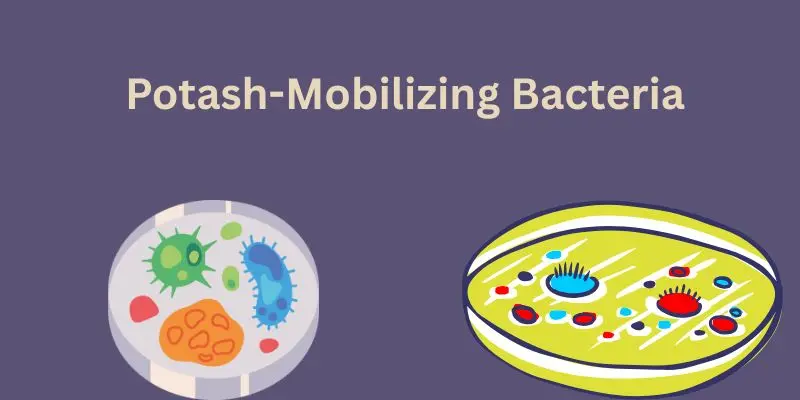Biofertilizers Application: Cultivating Life Beneath the Soil
Published: 21 May 2025
With so many products on the market—chemical fertilizers, organic composts, boosters, and enhancers—how do you know what truly helps the soil? You’ve heard about biofertilizers, but what are they really? Are they just another farming trend, or do they actually work? Can microbes in a packet really replace the effectiveness of conventional fertilizers? It’s easy to feel overwhelmed when every expert claims something different. If you’ve ever stood in your field, wondering whether there’s a better, safer, more natural way to feed your crops—this might be the answer you’ve been searching for.
So, guys, without wasting time, let’s jump into the article to learn the Biofertilizers Application: Cultivating Life Beneath the Soil
iofertilizers are natural substances containing living microorganisms that promote plant growth by increasing the availability or supply of essential nutrients, particularly in the soil. Unlike chemical fertilizers, they enrich the soil’s microbial life and support sustainable agriculture by enhancing nutrient cycling through biological processes.
- Biofertilizers are natural inputs made of living microorganisms.
- They help plants absorb nutrients by enhancing soil fertility biologically.
- Common microbes include nitrogen-fixers, phosphate solubilizers, and mycorrhizae.
- They are eco-friendly alternatives to chemical fertilizers.
- Used in sustainable and organic farming systems
3. Benefits of Using Biofertilizers
- Improves Soil Health: Restores soil biodiversity and organic content.
- Supports Plant Growth: Enhances root development, nutrient absorption, and yield.
- Environmentally Friendly: Reduces chemical runoff and pollution.
- Cost-Effective: Decreases the long-term cost of fertilizers.
- Emotional hook: “Healthy soil nurtures healthy plants, people, and planet.”
4. Types of Biofertilizers and Their Functions
Different types of biofertilizers contain specific microorganisms that perform unique functions in the soil, helping plants access essential nutrients naturally and efficiently.
- Rhizobium
- Azotobacter
- Azospirillum
- Blue-Green Algae (Cyanobacteria)
- Phosphate-Solubilizing Bacteria (PSB)
- Mycorrhizal Fungi (VAM – Vesicular Arbuscular Mycorrhizae)
- Frankia
- Potash-Mobilizing Bacteria
- Sulfur-Oxidizing Bacteria
- Zinc-Solubilizing Bacteria
- Silicate-Solubilizing Bacteria
There are several types of biofertilizers, each with a unique role in improving soil fertility and supporting plant growth. Below are the most commonly used types with a brief explanation of what they do:
1. Rhizobium
Lives in the root nodules of leguminous plants and fixes atmospheric nitrogen.
Helps plants like peas, beans, and lentils grow without added nitrogen fertilizer.
2. Azotobacter
A free-living nitrogen-fixing bacteria found in soil.
It boosts nitrogen availability for crops like wheat, maize, and rice.
3. Azospirillum
Associates with the roots of grasses and cereals.
Improves root development and supplies nitrogen to crops like maize and sorghum.
4. Blue-Green Algae (Cyanobacteria)
Photosynthetic microbes that fix nitrogen in flooded fields.
Widely used in paddy fields to enhance soil fertility naturally.
5. Phosphate-Solubilizing Bacteria (PSB)
Releases phosphorus from insoluble soil compounds.
Makes phosphorus more available to plants, promoting stronger growth.
6. Mycorrhizal Fungi (VAM)
Forms a symbiotic relationship with plant roots.
Increases water and nutrient uptake, especially phosphorus.
7. Frankia
Nitrogen-fixing bacteria that form nodules on non-legume trees like Alnus.
Used in agroforestry systems to improve soil fertility.
8. Potash-Mobilizing Bacteria
Helps release potassium from soil minerals.
Improves overall plant strength, grain quality, and stress tolerance.

9. Sulfur-Oxidizing Bacteria
Converts elemental sulfur into plant-usable sulfate.
Useful in sulfur-deficient soils for crops like onion and garlic.
10. Zinc-Solubilizing Bacteria
Makes zinc available to plants from insoluble sources.
Corrects zinc deficiency and supports enzyme functions in plants.
11. Silicate-Solubilizing Bacteria
Releases plant-available silica from soil silicate minerals.
Enhances plant strength and resistance to pests and diseases.
5. Methods of Biofertilizer Application
- Seed Treatment: Coating seeds before sowing to promote early root colonization.
- Soil Application: Mixing with compost or organic matter and spreading in the field.
- Root Dipping: Dipping plant roots in a biofertilizer solution before transplanting.
- Foliar Spray (Liquid Form): For some strains, spraying on leaves during crop growth.
- Mention moisture requirements, timing, and safety tips.
6. Best Practices for Maximum Effectiveness
- Use freshly prepared or well-stored biofertilizers (check expiry).
- Apply in moist soil for better microbial survival.
- Avoid mixing with strong fungicides or chemical fertilizers during application.
- Maintain soil pH between 6.5 and 7.5 for optimal results.
7. Common Mistakes to Avoid
- Using expired or improperly stored products.
- Applying without adequate soil moisture.
- Expecting immediate results like synthetic fertilizers.
- Over-reliance on chemicals that can kill beneficial microbes.
- Emotional line: “Microbial life thrives on care, timing, and balance—not haste.”
8. Farmer Experiences and Case Studies
- Share brief stories of farmers who adopted biofertilizers and improved soil fertility and yields.
- Include practical results: yield increase, input cost savings, better soil texture.
- Emotional quote: “I gave up chemicals, and my land finally breathed again.”
9. Biofertilizers in Climate-Smart Agriculture
- Explain how they reduce greenhouse gas emissions and improve carbon sequestration.
- Support drought- and stress-resilient farming practices.
- Highlight their role in regenerative agriculture and eco-farming movements.
FAQs about Biofertilizers
Here are some of the most frequently asked questions about the Biofertilizers Application: Cultivating Life Beneath the Soil
Rhizobium only works with legume plants like beans and peas, forming nodules on their roots. Azotobacter, on the other hand, lives freely in the soil and can help many crops like wheat and maize by fixing nitrogen.
No, each type works best with certain crops. For example, Rhizobium is good for legumes, while Azospirillum works well with grasses and cereals.
Not completely, but they reduce the need for chemical fertilizers. They help plants absorb more nutrients and water from the soil, especially phosphorus.
It also fixes nitrogen, but it works best in wet or flooded fields like rice paddies. Unlike Rhizobium or Azotobacter, it performs photosynthesis and thrives in water.
They break down fixed phosphorus in the soil and make it available to plants. This helps roots grow stronger and improves overall plant health.
10. Conclusion:
- The content on biofertilizers explains what they are—living microorganisms that enhance soil fertility and plant nutrition naturally. It outlines various types, including Rhizobium, Azotobacter, Azospirillum, mycorrhizal fungi, and others, each playing a unique role in fixing nitrogen, solubilizing phosphorus, or mobilizing other essential nutrients. Understanding these types is crucial for farmers and growers aiming to reduce chemical inputs, improve crop yield sustainably, and restore soil health for long-term productivity.

- Be Respectful
- Stay Relevant
- Stay Positive
- True Feedback
- Encourage Discussion
- Avoid Spamming
- No Fake News
- Don't Copy-Paste
- No Personal Attacks

- Be Respectful
- Stay Relevant
- Stay Positive
- True Feedback
- Encourage Discussion
- Avoid Spamming
- No Fake News
- Don't Copy-Paste
- No Personal Attacks





